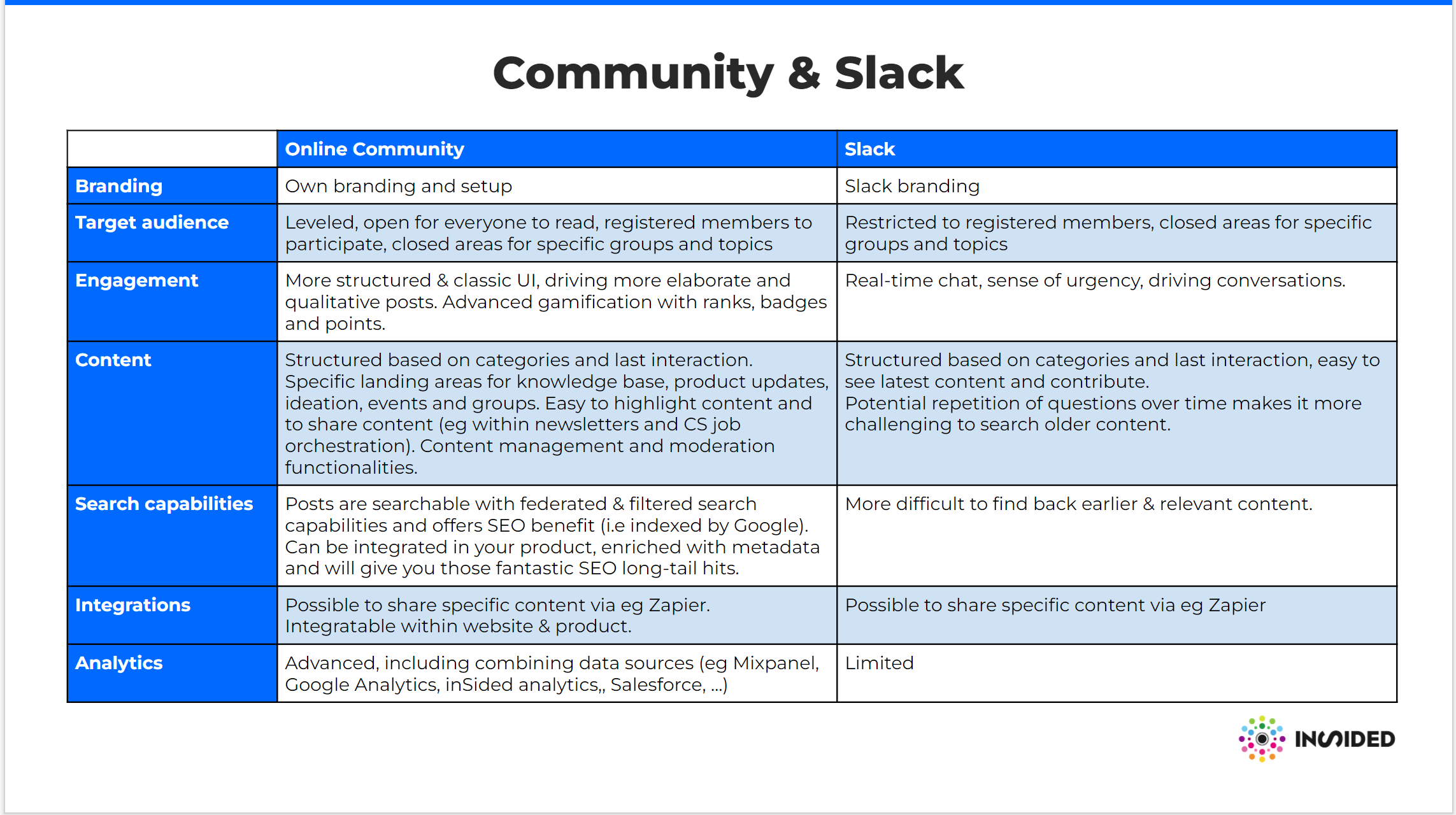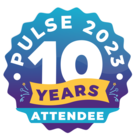Slack and Gainsight community are both community driven communication platforms. That said, there are significant differences between the two platforms.
We quite often get asked about the differences between and possible combinations of the two types of platforms. In this article I’d like to expand a bit on our thoughts. It is focused on Slack and Gainsight community, but is actually about chat and community platforms in general. Note: I am obviously biased 😅 Full disclosure, we use Slack internally as well, it’s a great tool.
Differences in philosophy
Gainsight community and Slack have different design philosophies, one designed as a customer hub, the other as an internal collaboration tool. These philosophies lead to different optimizations which should be embraced, not fought.
Slack is ideal for immediate, interactive, mildly chaotic and small-scale conversations. It is a fantastic tool to rapidly create connections, getting a feeling for the pulse of the day and to foster a sense of belonging.
Gainsight community is focused on curated, structured, slow burn, long term discussions and articles. Posts are naturally categorized and enriched with metadata; they can be indexed in (federated) search; you can integrate them in your product; and a community will give you those fantastic SEO long-tail hits.
Ever since Slack became popular we’ve seen discussions and companies adopt one or both tools for community building. As Rich Millington said back in 2016:
Slack prioritizes the level of activity and sense of community above all else. When a sense of community is king, Slack is your castle.
However, there are severe downsides to immediacy-above-all platforms, as Rich continues:
The same questions might be repeated endlessly. Knowledge is lost once it rolls off the edge of the top of the page. You lose your search traffic (which accounts for 70%+ traffic in many communities).
More differences
Gainsight community is a modern approach to customer success, it integrates with a ton of tools, is optimized for SEO and finding answers to burning questions. Reading first, asking 2nd; this saves a ton of time and noise.
Users are encouraged to participate with ranks and badges and the flow from post → blog/article → knowledge base is a natural one. Customers do not need an account to read.
The UI of Slack is known to millions of users, they won’t need to learn the platform, they quite likely already have the native app on their phone. This also means that branding your customer facing Slack is not an option.
Answers are gained quickly, at the expense of people repeating themselves over and over again.
In the replies there was one more extremely valid point raised:
I like to add 1 point: Slack/MS Teams or Discord means that the data ownership is still with these large software co.s Salesforce, or Microsoft or LinkedIn, etc.
Hybrid approaches
To get the best of both worlds, many communities have tried a hybrid approach. Using chat platforms for immediate discussions and events, and a community platform for everything else is certainly a viable approach. A few caveats apply, so please make sure you consider the following aspects before launching:
- How to deal with login, making sure both platforms are connected to our SSO will help with user experience.
- Synchronize the user names and profile pictures, so that community members can recognize each other cross-platform.
- Cover both in your T&Cs.
- Make it explicit that you’re allowed to move content between the two.
- Moderation strategies should be aligned and CoCs should be the same/similar
- Use e.g. a Zapier integration to ping (specific) channels on any community activity
- Think about a workflow to get useful content from Slack to Gainsight community.
- Note the difference between philosophies and expected cadence, don’t blindly sync everything from Slack to your community platform.
- Using DMs in Slack is normal, but it is quite detrimental to getting a community vibe going, consider disabling them
If you are thinking about a hybrid community, we are eager to help, please do reach out!
While we don’t think anyone has solved this challenge 100%. We’d love to hear from you if you have some experiences, please post them below!




